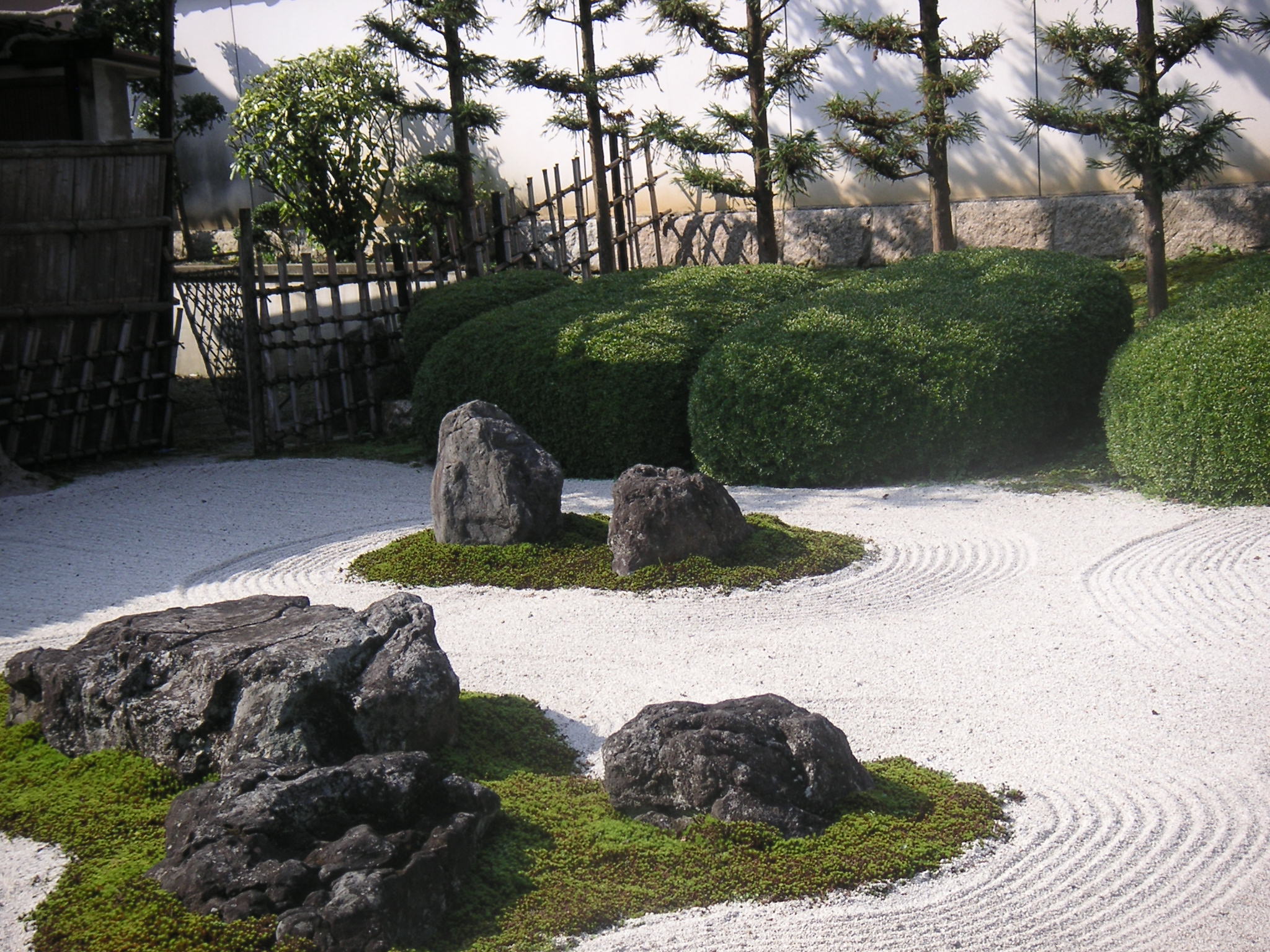The blissful time of Heian came to an end with the eruption of major civil wars between ruling aristocrats—the emperor had increasingly lost power to noble in-laws and was now forced to appoint a shogun or grand general as his representative. Without dethroning the emperor and leaving Kyoto intact as a ritual center, the new shogunate moved the capital to Kamakura, about an hour south of Tokyo. They began a different kind of rule in the Kamakura period (1185-1333), emphasizing military skills and exerting a more stringent control over the population.
As a result, several new schools of Buddhism became popular. The aristocratic warriors, bushi or samurai, embraced Zen Buddhism, which was brought to Japan by China-bound monks around the year 1200. The most important figures here are Dogen (1200-1253), who established Soto Zen and resided for some time in Fushimi (south of Kyoto), and Eisai (1141-1215), the founder of the Rinzai school (with shoutings and beatings), whose main center was Tofukuji (southeast Kyoto). Like their Heian predecessors, they had traveled to different places and were accordingly initiated into different lineages. In an effort to return to original “Hinayana” Buddhism and the search for personal enlightenment, they focused on meditation practice (zazen), which helped the warriors’ mental concentration, and coupled it with rigorous training in martial values, such as bravery, loyalty, discipline, duty, fearlessness, and the facing of death. They also developed yet another form of Japanese writing, katakana, on the basis of Sanskrit letters to transcribe Buddhist technical terms.
The majority of the populace, and especially the growing merchant class, on the other hand, became followers of Pure Land (Jodo) Buddhism. This was first created on the basis of Japanese Tendai practice—and without travels to China—by Honen (1133-1212) and refined further by his disciple Shinran (1173-1262), who founded Jodo Shinshu, the True Pure Land School. His memorial shrine is located at the foot of Kiyomizu Temple, and the headquarters of the school are north of Kyoto station (Nishi honganji, Higashi honganji). The school’s key belief is in the Buddha Amitabha (Jap. Amida), who resides in the western Pure Land and is assisted by Kannon. He will grant salvation to anyone who shows deep faith and true devotion, expressed in the regular chanting of namu amida butsu or “Hail Amida Buddha.” The practice requires no special religious training, morality, ritual, or the like. It became popular very quickly, especially also since its monks broke with tradition and got married, being religious specialists of the people and for the people.
Another development is the Nichiren school, a national movement coupled with great faith in the Lotus Sutra that arose in the 13th century. Its founder Nichiren (1222-1282) was a Tendai monk and nationalist zealot who organized the country against the invading Mongols. Seeing their ships on the horizon, he and his followers prayed for the arousal of strong “winds of the gods” (kamikaze) by chanting namu myoho renge kyo or “Hail the Great Lotus Sutra.” While the school’s practice is not unlike Pure Land (devotion and chanting), its aim more thisworldly. Pure Land followers hope to be elevated to the Pure Land after death, reaching enlightenment this way. Nichiren followers seek benefits in the here and now. Myorenji in northwest Kyoto is a Nichiren temple.
The same basic religious patterns continued during the Muromachi period (1336-1573), when a new warrior group took over the shogunate. Centered again in Kyoto, it saw the development of Zen arts, especially gardens, such as can still be found in Kyoto in Daitokuji, Tenryuji, Kokedera, Jinkakuji, and many others. Other arts include Zen painting, tea ceremony, and Noh theater. The Muromachi ended with half a century of civil war, during which the monk army of Mount Hiei, created by outlaws fleeing into the mountain and usually engaged in small-scale scuffles with the monk army of Miidera, a rival Tendai temple at the eastern foot of the mountain near Lake Biwa, fought fierce battles but backed the wrong contender. As a result, the general Hideyoshi razed its temples and forced all its monks to return to lay life. Of over 3,000 buildings, only about 150 were eventually rebuilt, and those we see on the mountain today date from the 17th century at the earliest.
The wars were eventually resolved with the Tokugawa family obtaining the shogunate and moving the capital to Tokyo, then known as Edo. During the Edo or Tokugawa period (1600-1868), the merchant class rose to new heights as the economy flourished and various new forms of entertainment developed, among them Kabuki theater, woodblock prints, and haiku poetry.
In terms of religion, three things happened. First the Tokugawa were extremely suspicious of anything that could impact their rule (a paranoia that can be vividly felt in Nijo Castle). Christian missionaries who had gained a foothold in the southern island of Kyushu in the 16th century were forbidden entry and all converted Japanese Christians were persecuted, often to the point of execution (by crucifixion). Buddhist schools who had small temples in all communities were conscripted to serve as quasi city-halls, where everybody had to register. Following newly imported Chinese teachings, the Tokugawa created an educational system along Confucian values (loyalty, filial piety, sincerity, order, and stability). They also set up a rigorous social hierarchy of restricted classes (mibun), so that fishermen had to remain fishermen, merchants remained merchants, artisans remained artisans. As a result, adoption flourished since often sons did not want or were unable to follow their father’s work, as did pilgrimage—the one legal way to travel and see things other than the home village. The 33-temple Kannon pilgrimage in the Kyoto area, established under the Kamakura, took off to new heights and became the popular route it still is today.

Leave a Reply